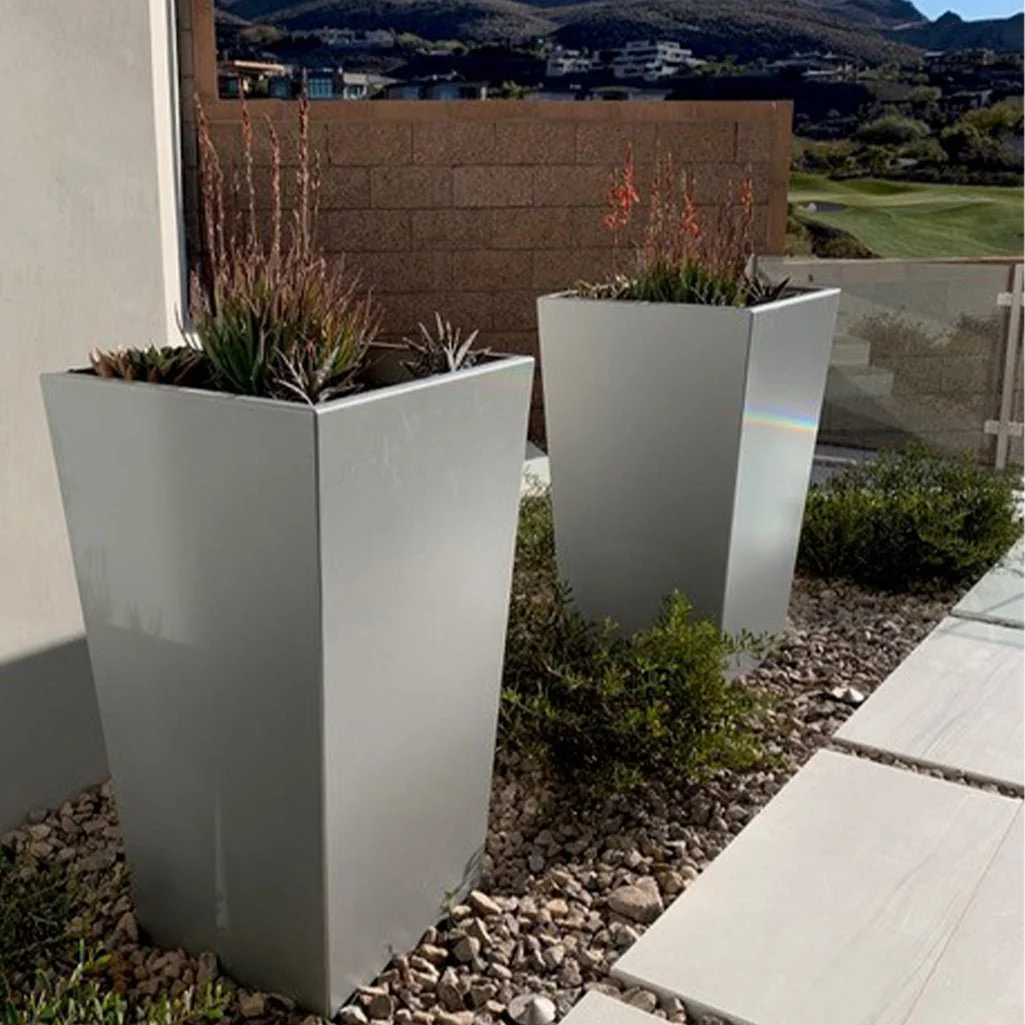How to Use Planters for Biofiltration
Biofiltration is a natural process that reduces volatile organic compounds (VOCs) in the air. Plants break down contaminants as they purify the air we breathe and the water we drink.
Keep reading to learn more about the process, the benefits, and how the right planters can facilitate this fascinating natural function.
Modern Elite Cube Planters at The Towers at Emeryville in Emeryville, CA
What Is Biofiltration?
Biofiltration, put simply, is the natural biological process of reducing VOCs and pollution in the air.
By drawing a contaminated air or water stream through a growing medium — like a soil bed — and then through a plant's root system, microorganisms trap contaminants in the air and water. Once trapped, the contaminants break down and evaporate.
Using Planters for Biofiltration
Planters can facilitate biofiltration by housing living materials that capture and biologically degrade pollutants. For purposes of improving both air and water quality, planters can play a truly critical role.
For one, urban planners, landscape designers, and architects are increasingly adopting green roof solutions into their design plans. Following the lead of countries like Canada and Switzerland, it’s only a matter of time before regulations require at least “partly green” objectives in new construction.
Sometimes — on constrained sites positioned next to a building or because of setback limitations — existing soil isn’t conducive to infiltration. In this case, non-infiltrating bioretention planters deliver an effective solution. By incorporating a subsurface drain system, you can manage stormwater run-off and optimize water quality at the same time.
Modern Elite Tapered Planters at a Private Residence
Benefits of Biofiltration
How Plants Affect the Air
In elementary school, you likely learned about how plants clean the air through photosynthesis. During that process, plants consume carbon dioxide and release oxygen.
Plants also have the power to remove toxins from the air we breathe by capturing and breaking down VOCs.
But unless your plant has airflow at the root level, the plant won’t be able to properly filter the air to make a truly significant impact on your indoor air quality. To ensure that kind of airflow, plants need planters that create the right conditions. This means maximizing how much airflow gets to the roots.
Another interesting fact about plants and air purification comes from a former NASA research scientist, Bill Wolverton. “The amount of leaf surface area influences the rate of air purification.” So the larger and leafier the plant, the cleaner the air will be.
Wolverton admits it’s impossible to quantify how many plants would be needed to completely purify a room, but a good rule of thumb is two “good sized” plants per every hundred square feet.
How Plants Filter Water
Chemicals in stormwater are toxic to aquatic animals and living beings alike. As a result, scientists are constantly seeking innovative and sustainable solutions to filter stormwater and combat pollution.
By placing certain filtering plants in a stormwater planter, it’s possible to redirect and filter run-off before it heads back to the general water supply.
How Soil Filters Water
Researchers at Michigan State University call soil “the planet’s biggest water filter.”
As water sinks into the soil, it is cleaned by processes that are physical, chemical, and biological in nature. Living organisms in the soil transform and break down chemicals and other foreign contaminants like fertilizer or animal waste.
But not all soil is created equal when it comes to filtration. When choosing your soil, be sure to consider the size of the soil’s pores:
Soil that is too coarse won’t capture and eliminate pollutants. But soil that is too fine will block water from passing through.
The ideal soil has a distribution of pores of different sizes, so it filters the water and also allows it to pass through.
Modern Elite Metal Planters at Landmark Theatres in Washington, DC
Biofiltration Planters
By integrating planters into landscape design, plants can minimize stormwater run-off and — even though it might sound dramatic — help save the planet.
Biofiltration planters typically have walled vertical sides but provide flexibility when considering depth, edge construction, or choice of vegetation. They can be installed just about anywhere — along property lines, sidewalks, or pedestrian boulevards.
Conclusion
For your commercial or residential clients looking for progressive, functional, and sustainable design solutions, biofiltration planters can be the answer. Plus, you’ll be pleasantly surprised about how these planters can elevate the visual appeal of your project at the same time.
If you’ve got questions about the right planters for your project, request a quote today. Our experts will be happy to help you find the perfect fit.




